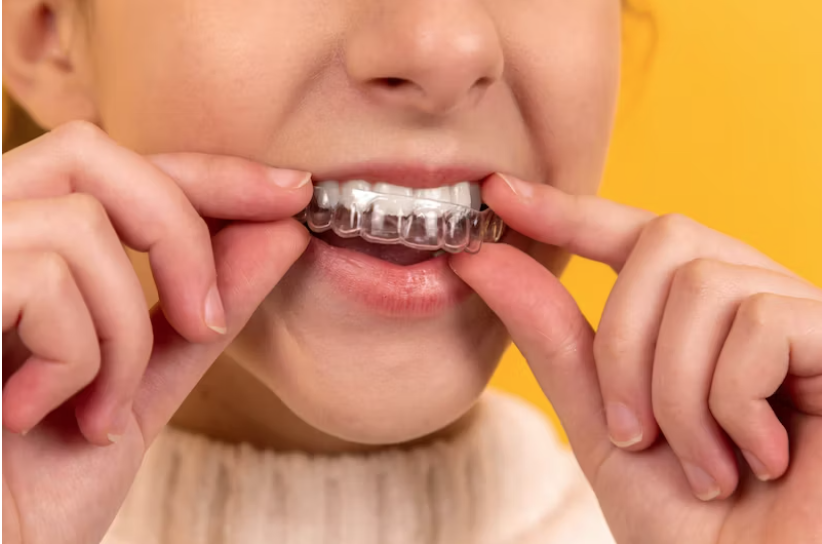Orthodontic treatment is a big commitment and one that shouldn’t be undertaken without a full understanding of what is involved and the responsibility you play. It’s understandable to go through months of treatment, to finally reach that end point where your teeth are straightened, your bite is aligned, and you can finally stop wearing your brace.
After putting in all that hard work, the last thing you want is for your teeth to move after your treatment ends. Unfortunately, this is a regular occurrence, that’s why at your specialist orthodontist in Chorley, we can’t stress enough the importance of wearing your retainer.
Why Do Our Teeth Sometimes Move After Wearing Braces?
While braces do an extremely efficient job of moving our teeth into the perfect alignment, they cannot move the ligaments that connect the teeth to the jawbone. These ligaments are elastic and can be easily manipulated when braces are in place but once they’re taken off, they tend to pull teeth back to where they originally started.
The severity of your misalignment or malocclusion and certain specific orthodontic problems will more be affected by orthodontic relapse than others, but everyone can be affected by this on some scale.
Factors Affecting Tooth Movement.
It is not just forgetting to wear your retainer that can cause an orthodontic relapse, similarly, it is not always directly after treatment that teeth can relapse. Several factors can contribute to teeth shifting after braces, including:
- Lack of Retainer Use – the most common cause of tooth movement after braces is not wearing retainers as recommended. Retainers are custom-made devices that help maintain the new alignment of your teeth and can be removable or fixed.
- Ageing and Natural Changes – over time, teeth tend to shift as part of the ageing process which is particularly noticeable in the bottom arch. Changes in gum and bone health and underlying health conditions can impact teeth stability contributing to movement.
- Oral Habits – habits like teeth grinding can exert pressure on your teeth, causing them to shift. Wearing a nightguard can protect your teeth from grinding-related movement.
- Gum Disease – gum disease weakens the gums that support your teeth, making it easier for them to shift. Maintaining good oral hygiene and regular dental check-ups can help prevent this.
- Tooth Extraction or Missing Teeth – gaps created by tooth extraction can lead to neighbouring teeth shifting to fill the space. Replacing missing teeth with dental implants or bridges can help maintain proper alignment.
- Trauma or Accidents – any traumatic incident affecting your teeth or jaw can disrupt alignment.
The Importance of Wearing Retainers.
The key to preventing tooth movement after braces is diligent retainer use. Removable or fixed retainers are designed to keep your teeth in their new positions. Wearing them as directed by your orthodontist, is crucial to maintaining your smile’s alignment and if you notice your teeth have shifted, consult your orthodontist. They can assess the extent of the movement and recommend the appropriate course of action. For minor shifts, consistent retainer wear might suffice, however, if significant movement has occurred, your orthodontist may suggest additional treatments, such as braces or Invisalign.
Fixed Retainers.
A fixed retainer consists of a thin metal wire that is bonded to the back of the teeth. Sometimes known as bonded or permanent retainers, they are only attached to the front six teeth, so if you’ve had your back teeth straightened too, it may be that you need to wear a removable retainer also. Fixed retainers are cared for like braces, by brushing and flossing carefully around the wire to ensure teeth stay clean. Fixed retainers are discreet and permanently attached to your teeth so there is no need to worry about remembering to take them in and out, they also won’t affect speech. On the other hand, extra care is needed to care for them, and you may need to adapt your diet to avoid breaking the wire.
Removable Retainers.
Removable retainers are made from a clear, hard plastic and cover all teeth. They keep your newly aligned smile in place for however long your orthodontist advises you to wear them. They are much more hygienic as you can take them out to eat and cleaning is much easier, for your teeth and the retainers themselves. The downside to removable retainers is that it is the responsibility of the wearer to remember to take them in and out, and to wear them for the recommended time. They can also cause some trouble with speech at the beginning, but this can be rectified with a little wear and practice.
Treating Orthodontic Relapse.
Orthodontic relapse is easily treated but it may mean going through the procedure of braces treatment yet again. A new retainer is rarely strong enough to nudge teeth back into position, but at Chorley Orthodontics, we can put your mind at ease. We are expert orthodontists in Chorley, well-practiced in creating the smile of your dreams and keeping them that way.
Get Your Smile Back with a Specialist Orthodontist in Chorley.
Teeth shifting after braces is a natural phenomenon, but it’s not a cause for despair. Understanding the reasons behind this movement and taking proactive steps can preserve your beautiful smile for years to come. Remember, your orthodontic journey doesn’t end with braces – it continues with responsible retainer use and maintaining good oral hygiene.
At Chorley Orthodontics, we’re dedicated to helping you achieve and maintain the smile of your dreams. Whether it’s preventing teeth movement, addressing minor shifts, or exploring orthodontic treatments as an adult, we’re here to guide you every step of the way. Contact your friendly orthodontist in Chorley today for a free consultation and let us help you to your lifetime of confident, radiant smiles.




